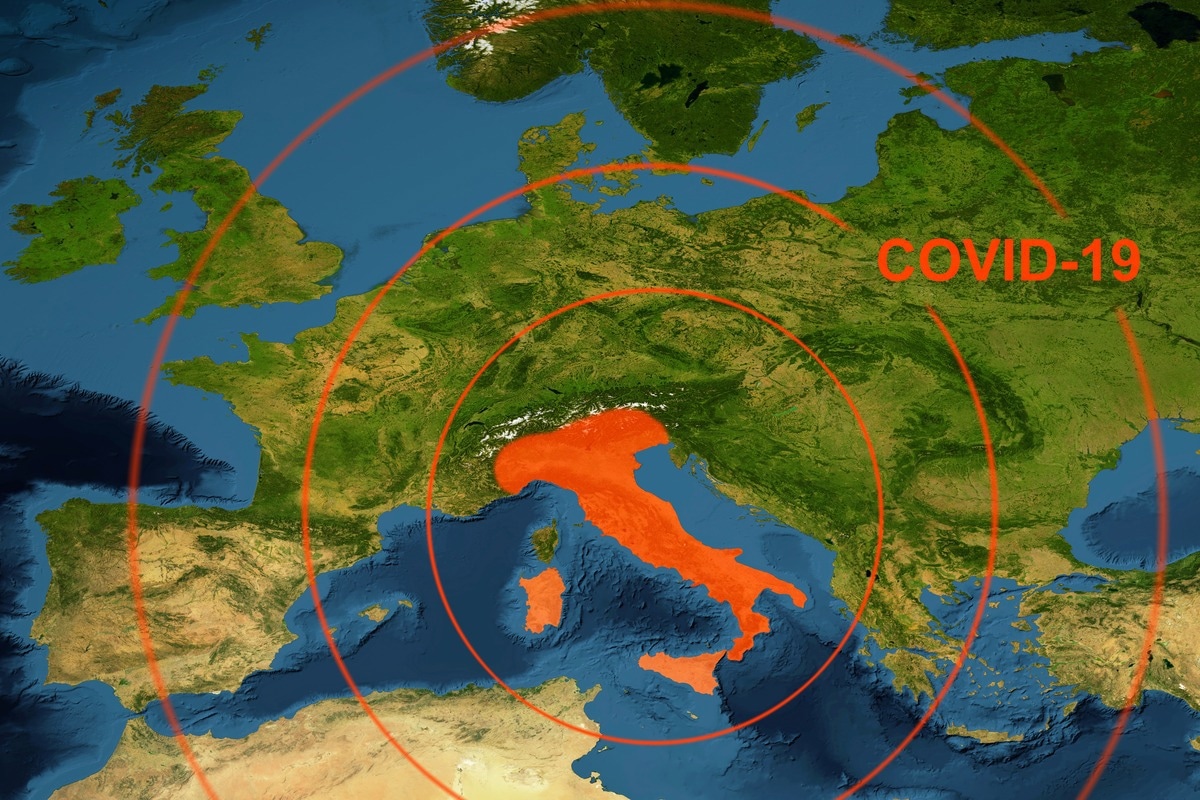A recent study published in the medRxiv* preprint server assessed the severe acute respiratory syndrome coronavirus 2 (SARS-CoV-2) lethality and severity during the two years of the SARS-CoV-2 pandemic in Italy.
 Study: The decline of COVID-19 severity and lethality over two years of pandemic. Image Credit: Viacheslav Lopatin/Shutterstock
Study: The decline of COVID-19 severity and lethality over two years of pandemic. Image Credit: Viacheslav Lopatin/Shutterstock

 *Important notice: medRxiv publishes preliminary scientific reports that are not peer-reviewed and, therefore, should not be regarded as conclusive, guide clinical practice/health-related behavior, or treated as established information.
*Important notice: medRxiv publishes preliminary scientific reports that are not peer-reviewed and, therefore, should not be regarded as conclusive, guide clinical practice/health-related behavior, or treated as established information.
Background
The initial two years of the SARS-CoV-2 pandemic have been defined by an ever-evolving epidemiological condition, posing significant challenges to nearly every nation in the world. The tracking of crucial characteristics, such as the likelihood of severe and fatal outcomes and infection attack rates, has been significantly hampered by the under-notification of SARS-CoV-2 infections.
Many features of the temporal variations in the CoV disease 2019 (COVID-19) epidemiology during the pandemic course remain uncertain due to the unclear level of undetected SARS-CoV-2 transmission. It is critical to evaluate the immunity acquired during the first two pandemic years and the likelihood of unfavorable consequences (e.g., hospitalization and death) to calculate the future risks of COVID-19 burden and SARS-CoV-2 infection.
About the study
In the current research, the investigators estimated the number of daily SARS-CoV-2 infections in Italy during the initial two years of the COVID-19 pandemic using a mathematical model of SARS-CoV-2 transmission and vaccination guided by genomic and epidemiological monitoring data on viral variants. Specifically, the team provided estimations of alterations in infection attack rates, infection ascertainment ratios, population vulnerability to infection, and the likelihood of unfavorable outcomes (hospitalization, intensive care unit (ICU) admission, and mortality) in the context of COVID-19 in the present investigation.
The researchers established an age-based stochastic framework to simulate COVID-19 vaccination and transmission in Italy between 21 February 2020, the date of detection of the first locally transmitted SARS-CoV-2 case, and 20 February 2022. Five phases comprised the two years of simulation. While the SARS-CoV-2 ancestral lineages circulated during the first two phases, the Alpha, Delta, and Omicron variants predominated during phases 3, 4, and 5, respectively.
Results
According to the study results, the SARS-CoV-2 infection ascertainment ratio between the two SARS-CoV-2 ancestral phases was high. This inference could be attributable to the increase in testing capacity, the improvement of local reporting systems, and the rigorous test-track and trace method application.
On the other hand, the authors discovered a decrease in infection detection during the Delta and Alpha phases. This finding was likely caused by a range of factors, such as the availability of home testing, resulting in self-diagnoses not reported to the surveillance network, the decrease in contact tracing frequency after 2021, and the notable rise in asymptomatic infections upon the augmentation of the vaccination initiative.
Indeed, COVID-19 vaccination resulted in a transition in the prevalence of infections toward the younger age groups and an increase in breakthrough infections; both patterns decreased the overall likelihood of experiencing SARS-CoV-2 symptoms, consequently, the overall probability of unaware infected people seeking tests. The infection ascertainment ratio rose once more in the Omicron phase. COVID-19 testing capacity was scaled up significantly during this time due to the increase in infections. Additionally, there was an increase in voluntary screening as people prepared for gatherings over the Christmas and New Year's vacations.
The team reported that the attack rates of SARS-CoV-2 ancestral lineages, Delta, and Alpha variants were in a similar range, i.e., 10-17%, whereas that of Omicron till 20 February 2022 was noticeably higher, i.e., 51%. The combined influences of COVID-19 vaccination, immunity from natural SARS-CoV-2 infection, alteration in viral variant features, and better patient management drastically decreased the odds of hospitalization, ICU admission, and infection-related death, ranging from 20- to 40-fold during the period of Omicron dominance as compared to the initial acute phase.
The current findings highlight the crucial role that COVID-19 booster vaccination played during the Omicron phase. By the end of February 2022, the authors predicted that almost nine in 10 Italians still safeguarded by vaccination might have received a booster shot. Weakening immunity will probably increase population susceptibility to COVID-19 during 2022 since booster effectiveness decreases over time.
Conclusions
The study findings illustrated that the COVID-19 burden in Italy has remained low, with a tolerable influence on hospitals, despite a significant increase in SARS-CoV-2 cases from the initiation of 2022. Yet, the necessity for vigilant tracking of SARS-CoV-2 variants and epidemic patterns is underscored by the potential future appearance of novel viral variants that may bypass existing immunity from natural infection or vaccination and be more transmissible or pathogenic.
Additionally, the current findings emphasize the critical role of evolving immunity against SARS-CoV-2 acquired from natural infections and vaccination in reducing the severe clinical outcomes following COVID-19 throughout the various phases. A reversal of this pattern could occur in the future if the degree of population vulnerability to COVID-19 rises again due to the fading of natural infection and vaccination imparted protection.

 *Important notice: medRxiv publishes preliminary scientific reports that are not peer-reviewed and, therefore, should not be regarded as conclusive, guide clinical practice/health-related behavior, or treated as established information.
*Important notice: medRxiv publishes preliminary scientific reports that are not peer-reviewed and, therefore, should not be regarded as conclusive, guide clinical practice/health-related behavior, or treated as established information.